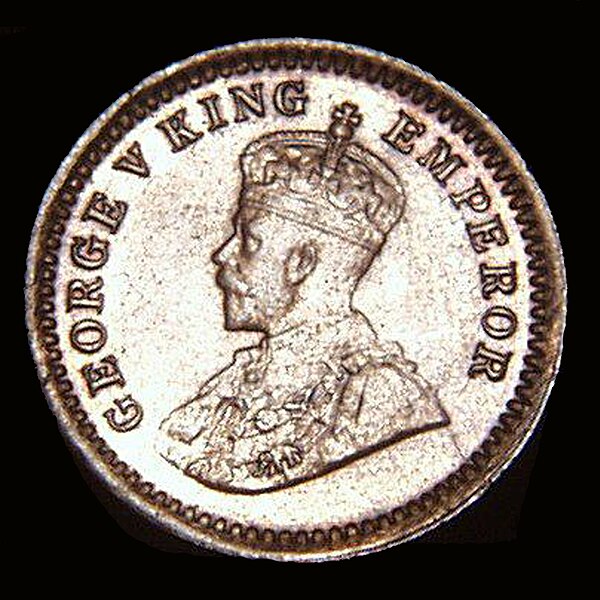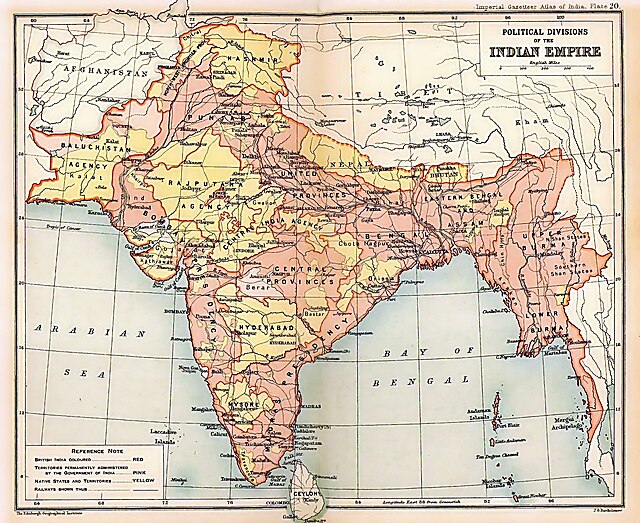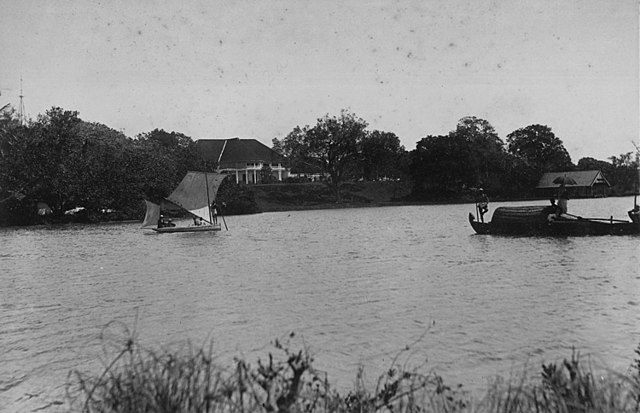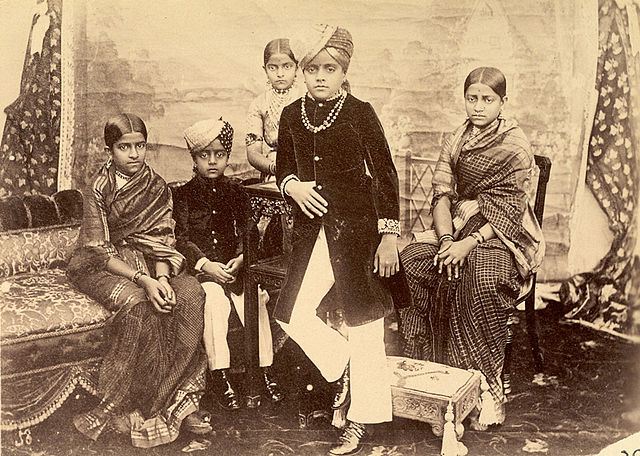A king-emperor is a sovereign ruler who is simultaneously a king of one territory and emperor of another. This title usually results from a merger of a royal and imperial crown, but recognises the two territories as different politically and culturally as well as in status. It also denotes a king's imperial status through the acquisition of an empire or vice versa.
A plaque on the Manchester Town Hall Extension records George VI's titles before giving up being Emperor of India.
Indian coins during the British Raj featured the title "King Emperor", such as this George V coin.
A princely state was a nominally sovereign entity of the British Indian Empire that was not directly governed by the British, but rather by an Indian ruler under a form of indirect rule, subject to a subsidiary alliance and the suzerainty or paramountcy of the British crown.
Political subdivisions of the Indian Empire in 1909 with British India (pink) and the princely states (yellow)
Sayajirao Gaekwad III, the maharaja of Baroda State.
An old image of the British Residency in the city of Quilon, Kerala
An 1895 group photograph of the eleven-year-old Krishnaraja Wadiyar IV, ruler of the princely state of Mysore in South India, with his brothers and sisters. In 1799, his grandfather, then aged five, had been granted dominion of Mysore by the British and forced into a subsidiary alliance. The British later directly governed the state between 1831 and 1881.






